Zooming into the Dark Side of Human Annexin-S100 Complexes: Dynamic Alliance of Flexible Partners
- PMID: 32824294
- PMCID: PMC7461550
- DOI: 10.3390/ijms21165879
Zooming into the Dark Side of Human Annexin-S100 Complexes: Dynamic Alliance of Flexible Partners
Abstract
Annexins and S100 proteins form two large families of Ca2+-binding proteins. They are quite different both structurally and functionally, with S100 proteins being small (10-12 kDa) acidic regulatory proteins from the EF-hand superfamily of Ca2+-binding proteins, and with annexins being at least three-fold larger (329 ± 12 versus 98 ± 7 residues) and using non-EF-hand-based mechanism for calcium binding. Members of both families have multiple biological roles, being able to bind to a large cohort of partners and possessing a multitude of functions. Furthermore, annexins and S100 proteins can interact with each other in either a Ca2+-dependent or Ca2+-independent manner, forming functional annexin-S100 complexes. Such functional polymorphism and binding indiscrimination are rather unexpected, since structural information is available for many annexins and S100 proteins, which therefore are considered as ordered proteins that should follow the classical "one protein-one structure-one function" model. On the other hand, the ability to be engaged in a wide range of interactions with multiple, often unrelated, binding partners and possess multiple functions represent characteristic features of intrinsically disordered proteins (IDPs) and intrinsically disordered protein regions (IDPRs); i.e., functional proteins or protein regions lacking unique tertiary structures. The aim of this paper is to provide an overview of the functional roles of human annexins and S100 proteins, and to use the protein intrinsic disorder perspective to explain their exceptional multifunctionality and binding promiscuity.
Keywords: Ca2+-binding protein; S100 protein; annexin; intrinsically disordered protein; multifunctionality; protein–protein interactions.
Conflict of interest statement
The authors declare no conflict of interest.
Figures




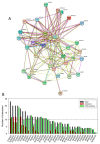

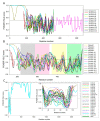
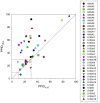
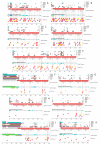
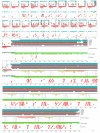
Similar articles
-
S100-annexin complexes--structural insights.FEBS J. 2008 Oct;275(20):4956-66. doi: 10.1111/j.1742-4658.2008.06654.x. Epub 2008 Sep 13. FEBS J. 2008. PMID: 18795951 Review.
-
S100-annexin complexes--biology of conditional association.FEBS J. 2008 Oct;275(20):4945-55. doi: 10.1111/j.1742-4658.2008.06653.x. Epub 2008 Sep 13. FEBS J. 2008. PMID: 18795952 Review.
-
Comprehensive interaction of dicalcin with annexins in frog olfactory and respiratory cilia.FEBS J. 2007 Sep;274(18):4863-76. doi: 10.1111/j.1742-4658.2007.06007.x. Epub 2007 Aug 21. FEBS J. 2007. PMID: 17714509
-
Functions of short lifetime biological structures at large: the case of intrinsically disordered proteins.Brief Funct Genomics. 2020 Jan 22;19(1):60-68. doi: 10.1093/bfgp/ely023. Brief Funct Genomics. 2020. PMID: 29982297 Review.
-
S100A1 and S100B interactions with annexins.Biochim Biophys Acta. 2000 Dec 20;1498(2-3):192-206. doi: 10.1016/s0167-4889(00)00096-3. Biochim Biophys Acta. 2000. PMID: 11108963
Cited by
-
S100A12 triggers NETosis to aggravate myocardial infarction injury via the Annexin A5-calcium axis.Nat Commun. 2025 Feb 18;16(1):1746. doi: 10.1038/s41467-025-56978-5. Nat Commun. 2025. PMID: 39966386 Free PMC article.
-
Annexin A2-Mediated Plasminogen Activation in Endothelial Cells Contributes to the Proangiogenic Effect of Adenosine A2A Receptors.Front Pharmacol. 2021 Apr 27;12:654104. doi: 10.3389/fphar.2021.654104. eCollection 2021. Front Pharmacol. 2021. PMID: 33986681 Free PMC article.
-
Diagnostic value of the combined detection of serum tumor necrosis factor-α and fecal calprotectin in early sepsis-related encephalopathy.Front Med (Lausanne). 2025 Jun 2;12:1598624. doi: 10.3389/fmed.2025.1598624. eCollection 2025. Front Med (Lausanne). 2025. PMID: 40529149 Free PMC article.
-
Annexin gene family in Spirometra mansoni (Cestoda: Diphyllobothriidae) and its phylogenetic pattern among Platyhelminthes of medical interest.Parasite. 2024;31:32. doi: 10.1051/parasite/2024034. Epub 2024 Jun 21. Parasite. 2024. PMID: 38912916 Free PMC article.
-
Investigating the disordered regions (MoRFs, SLiMs and LCRs) and functions of mimicry proteins/peptides in silico.PLoS One. 2022 Apr 14;17(4):e0265657. doi: 10.1371/journal.pone.0265657. eCollection 2022. PLoS One. 2022. PMID: 35421114 Free PMC article.
References
Publication types
MeSH terms
Substances
LinkOut - more resources
Full Text Sources
Other Literature Sources
Miscellaneous

